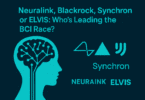Introduction: Innovation Meets Caution
The rise of brain-computer interface (BCI) technology brings futuristic potential—but also real-world medical risks. From surgical implants to non-invasive systems, safety is a key differentiator among neurotech companies. This article explores the safety profiles of three key players: ELVIS Technologies (Russia), Neuralink (USA), and Synchron (USA/Australia).
We compare their procedures, trial stages, surgical invasiveness, hardware failure rates, and regulatory transparency to help assess which company offers the safest path forward.
1. Brain Implants – Surgical Invasiveness & Installation
| Company | Implant Type | Surgical Procedure | Invasiveness Level |
|---|---|---|---|
| ELVIS | Cortical/Subdural | Craniotomy | Highly Invasive |
| Neuralink | Cortical (threaded) | Robotic craniotomy | Invasive (robot-assisted) |
| Synchron | Endovascular (Stentrode) | Jugular vein catheter | Minimally Invasive |
Insight: Synchron leads in safety due to its catheter-based approach that avoids open-brain surgery.
2. Brain Implants – Clinical Safety Record & Trial Stage
| Company | Human Trials Status | Known Adverse Events | Regulatory Milestones |
| ELVIS | Preclinical | No data released | Not FDA/EU certified |
| Neuralink | First human implant (2024) | One reported death under review* | FDA Investigational Device Exemption (IDE) |
| Synchron | Multiple U.S. patients implanted | Minor, manageable inflammation | FDA Breakthrough Device status |
*Note: Neuralink’s reported death is currently under internal and external investigation.
Insight: Synchron again shows the strongest clinical safety track record.
3. Device Reliability & Biological Risks
| Company | Implant Longevity Estimate | Risk of Rejection | Backup/Removal Options |
| ELVIS | Unknown | Medium* | No public documentation |
| Neuralink | 5+ years (est.) | Low (coating tech) | Surgical removal possible |
| Synchron | 10+ years (target) | Low | Easily removable via catheter |
*ELVIS uses older electrode tech which may provoke stronger immune response.
Additional Insight: Longevity and biocompatibility are critical in BCI safety. Synchron’s low-risk, catheter-removable system may reduce long-term complications, while Neuralink’s polymer-coated threads are designed for durability with minimal immune response. ELVIS’s less-documented implant materials raise questions about reliability in long-term usage.

4. Brain Implants – Ethical and Transparency Considerations
- ELVIS: Low public reporting; tied to Russian research institutions; limited external review.
- Neuralink: High media exposure but limited peer-reviewed publications; uses private ethics board.
- Synchron: Open collaboration with U.S. academic hospitals; publications in peer-reviewed journals; follows FDA transparency standards.
Insight: Synchron leads again, with academic-level transparency and openness to peer review.
Additional Consideration: Ethical review boards and publication transparency are essential for maintaining public trust. Synchron’s adherence to regulated medical frameworks makes it more trustworthy from an ethical standpoint. In contrast, ELVIS’s relative opacity and Neuralink’s private oversight pose concerns about accountability.
5. Post-Implant Monitoring & Support
| Company | Patient Support Program | Ongoing Monitoring | Public Outcomes Data |
| ELVIS | Unknown | Unclear | None published |
| Neuralink | Limited info available | Company-led follow-up | Under internal review |
| Synchron | Integrated with hospitals | Ongoing clinical monitoring | Peer-reviewed updates |
Insight: Long-term safety depends on how companies monitor patient outcomes post-implant. Synchron’s hospital-based model ensures continuous oversight, while Neuralink and ELVIS lack detailed disclosure about post-surgical support frameworks.
6. Global Regulatory Strategy
As neurotech expands, regulatory strategy becomes an essential safety and success factor. Synchron’s collaboration with FDA and hospital partners gives it a clear advantage in the U.S. and EU markets. Neuralink, while well-funded and high-profile, faces scrutiny due to limited peer-reviewed data and private oversight structures. ELVIS, although promising in concept, must navigate international distrust and limited visibility due to Russia’s political isolation.
Countries like the U.S., Germany, and Australia are implementing strict oversight mechanisms for BCIs, demanding transparency, trial data, and risk mitigation strategies. This favors companies already operating within these jurisdictions.
7. Psychological and Long-Term Effects
BCIs also pose risks beyond physical complications. Long-term effects on cognition, mood, and personality are largely unknown. Ethical discussions around identity, autonomy, and even consent are ongoing.
Synchron’s minimally invasive approach reduces such risks, and their clinical partners are exploring these psychological dimensions in follow-up studies. Neuralink and ELVIS must also engage with these questions, particularly as they move beyond therapeutic applications toward potential enhancement.
Conclusion: Who’s Safest in 2025?
| Factor | Safest Performer |
| Surgical Risk | Synchron |
| Trial Safety Record | Synchron |
| Device Longevity | Synchron |
| Ethical Transparency | Synchron |
| Post-Implant Monitoring | Synchron |
| Global Regulatory Fit | Synchron |
| Psychological Research | Synchron |
Winner: Synchron
While Neuralink leads in technical ambition and ELVIS has potential in vision/hearing restoration, Synchron clearly offers the safest and most transparent path to market in 2025.
As BCI technology moves from lab to patient, safety, transparency, and clinical accountability will shape not just adoption—but survival in a tightly regulated, high-risk market.







